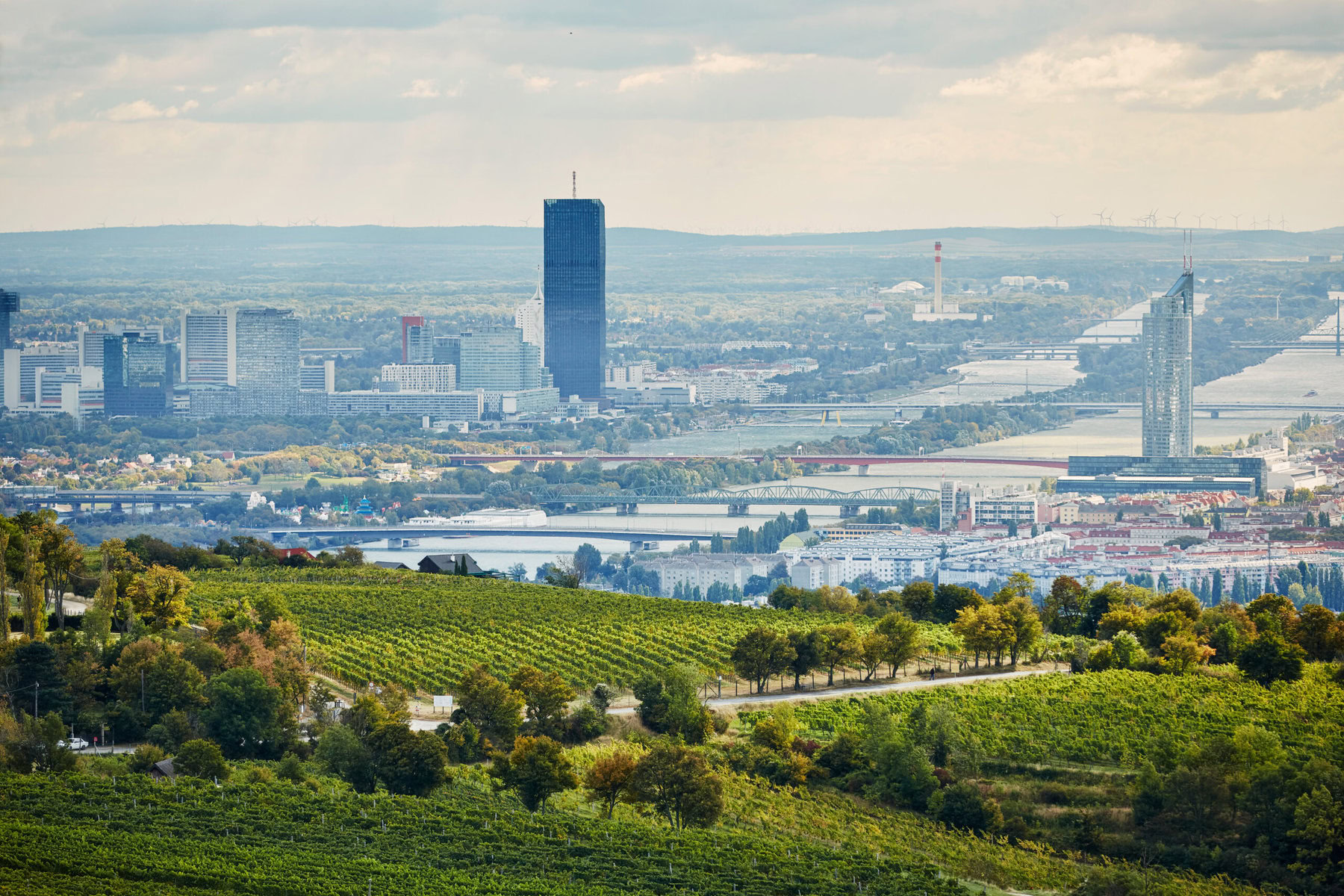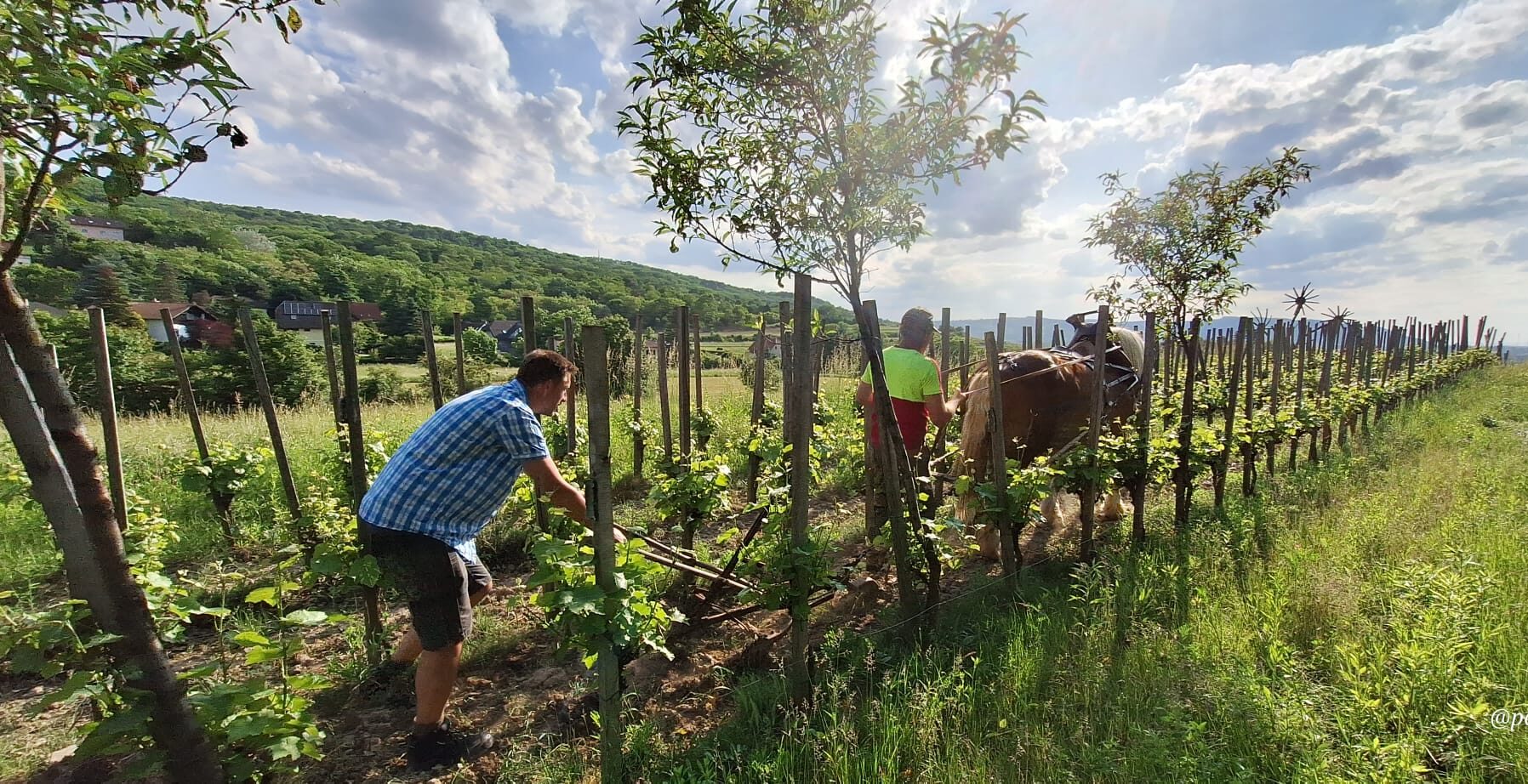In August 2002 a devastating flood hit Austria. After days of relentless rain, the Danube burst its banks, large swathes of the country were under water and more than 10,000 homes were damaged or destroyed.
After the floodwaters receded, winemaker Rainer Christ surveyed the damage to his Viennese vineyards: “It was horrible to see, rot and mold everywhere, entire slopes were affected.” Then he reached his family’s oldest vineyard, where multiple grape varieties were interplanted in the traditional style. “And everything was fine,” he recalls.
His grandfather used to talk about field blends, the ancient way of wine growing that was standard until the mid-19th century, but Christ dismissed it as the nostalgic musings of an old man — monovarietal vineyards and a high-tech approach were the way forward; everybody knew that. “That was the first time I thought, I guess they knew what they were doing back then,” recalls Christ. “They didn’t have a large chemical arsenal to help out, but they observed nature very closely, on the lookout for things that could be put to good use.”
That vineyard is 85 years old now, still producing an excellent field blend known in Vienna as Gemischter Satz, and Christ has become one of the Viennese winemakers that has brought this all-but-forgotten wine back into the mainstream.
The practice of strategically interplanting multiple grape varieties was long considered an insurance strategy, mentioned by Columella and Pliny the Elder back in Roman times. With different grape varieties reacting differently to cold, heat, rainfall and drought, at least some would survive a season regardless of what nature had in store. “It was a risk minimization strategy that developed from experience,” says Johannes Friedberger, a winemaker and lecturer at the College and Institute for Viticulture and Pomology Klosterneuburg.
When the phylloxera louse devastated European winemaking in the mid-19th century, most vineyards were replanted with single varieties and a monocultural approach developed, further bolstered by the advent of clonal selection and strict national wine laws. After the Second World War, industrialization of viticulture sounded the final death knell for field blends: A single grape variety planted across large areas in wide tractor-friendly rows became the order of the day.
The hills surrounding Vienna, which trace a continuous winemaking tradition to at least the Roman times, with earliest archaeological proof going all the way back to 750 B.C., are a patchwork of small vineyards ill-suited to large-scale industrial cultivation. Viennese winemaking barely scraped by through two world wars and the fall of the Habsburg monarchy, and most winemakers followed the trend towards single-variety vineyards after World War II. Still, the ancient tradition of interplanting clung on, and Gemischter Satz became synonymous with cheap house wine served at local wine taverns.
Crushed by negative news?
Sign up for the Reasons to be Cheerful newsletter.
This started changing in 2006, when Christ and five other leading Viennese winemakers founded the group WienWein with the hope of resurrecting it. The first big win came in 2013, when Gemischter Satz was awarded a protected designation of origin in Austria, defined as a white wine made from at least three grape varieties — though winemakers like Christ recommend using seven or more — that are grown, harvested and fermented together. This once-ubiquitous and now unique growing method also earned it the EU Protected Designation of Origin in April 2024.

A handful of winemakers still make traditional field blends in Alsace in France, the Douro Valley in Portugal, California and Australia, but the Viennese Gemischter Satz is rightly known as the mother of them all. Since 2006 the area devoted to this type of cultivation in Vienna has increased from 30 to 200 hectares, and sales have skyrocketed from 40,000 to 1.1 million bottles, with one-fifth exported to over 40 countries worldwide. For these winemakers, bottling field blends is not only a nod to tradition, but also a way to future-proof their business in an increasingly unstable environment.
“A successful field blend is not an experiment, but something we adapt as much as possible as we learn what works best together in a certain region,” stresses Christ. It’s less a method than a philosophy, one that favors quality over quantity, and deep generational knowledge rooted in the microregion over heavy-handed technological solutions implemented on a large scale.
Wine grapes are extremely sensitive to weather, and the climate crisis is threatening winemaking on multiple fronts, from the survival of the plants to the changing taste of the wine. Mild winters followed by late frost can destroy a vineyard before it ever has the chance to bear fruit, and the rainy period that once helped nourish the growing plants in the first part of the year has moved to late summer and autumn, when the grapes are almost ripe and susceptible to rot. The rise in temperatures also impacts sugar and alcohol content, and grapes are now harvested two to three weeks earlier than they were 40 years ago.
A well-managed field blend can be more adaptable both on the vine and in the bottle. A genetically diverse vineyard is better equipped to deal with unexpected drought and rain due to its varied root system. In a modern single-variety vineyard, thousands of clones grow in the same soil and conditions, explains Christ: “This means that each plant needs the same amount of the same thing from the same part of the soil at the same time. Not very respectful towards the soil’s resources, and very vulnerable.”
This approach also lets winemakers tinker with the taste of the final product with small tweaks, like strategically balancing early- and late-ripening varieties. In the normal course of a year, one to two percent of vines are damaged and need to be replaced, explains Christ. While the same variety would be replanted in a monocultural vineyard, this offers great potential for adaptation in a field blend. “If I notice the sugar content or the pH levels are getting too high, I can replant that one percent with varieties that stabilize the acidity levels, that don’t add more alcohol and density but give the wine freshness and elegance,” says Christ. The label of Gemischter Satz allows for a level of flexibility that monovarietal winemakers can only dream of.
“I can be more adaptable because the designation doesn’t specify a grape variety, so I have more to juggle with. It’s an advantage in terms of cultivation and robustness, but it also lets me react better to consumer trends,” says Friedberger. It also allows winemakers to introduce new fungus-resistant grape varieties, an approach that Friedberger is particularly interested in. In the ultimate blending of tradition and innovation, one of his Gemischter Satz vineyards is planted in the old Stockkultur style, each vine supported by its own stake rather than a trellis, using only new fungus-resistant varieties.

Despite their adaptive potential, field blends are unlikely to become the norm again. First there is the question of scale — interplanted vineyards are optimized for resilience and taste, not yield. It is also unlikely that consumers, used to single-variety wines and cuvées, will suddenly all start drinking field blends, points out Dr. Michaela Giesser from the Institute of Viticulture and Pomology at BOKU University (the University of Natural Resources and Life Sciences, Vienna). “I think field blends will remain a niche product in specific regions that have this tradition,” she says. While the ability to balance out alcohol and sugar despite rising temperatures is a big benefit unique to field blends, she stresses that other adaptation strategies, like changing row orientation and using cover crops to protect the soil, can be equally effective in single-variety vineyards.
Still, winemakers from all over the world come to Vienna to learn about field blends. Often, they’re very skeptical, says Christ. “People have become so monocultural in their thinking, the entire discussion is focused on grape varieties,” he notes. “It’s important to put this thinking aside. For me, Gemischter Satz is like training for the agriculture of the future: very natural, very resource-conserving, very self-regulated, without us having to constantly intervene.”
The post Viennese Winemakers Are Using an Ancient Method to Make Climate-Resilient Wine appeared first on Reasons to be Cheerful.




